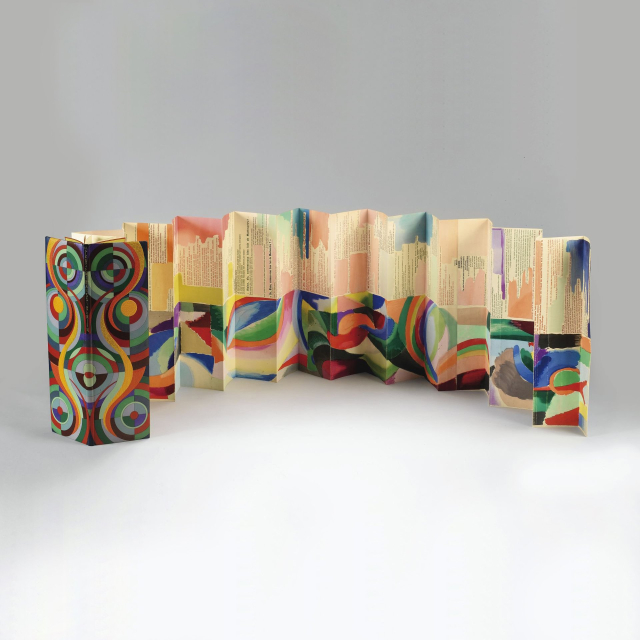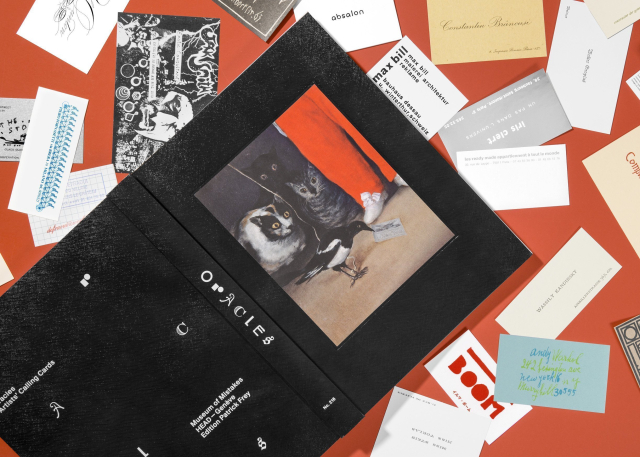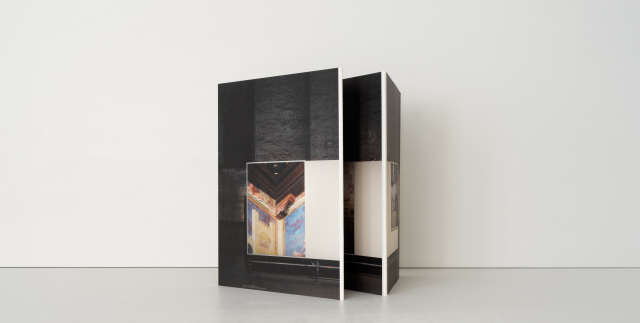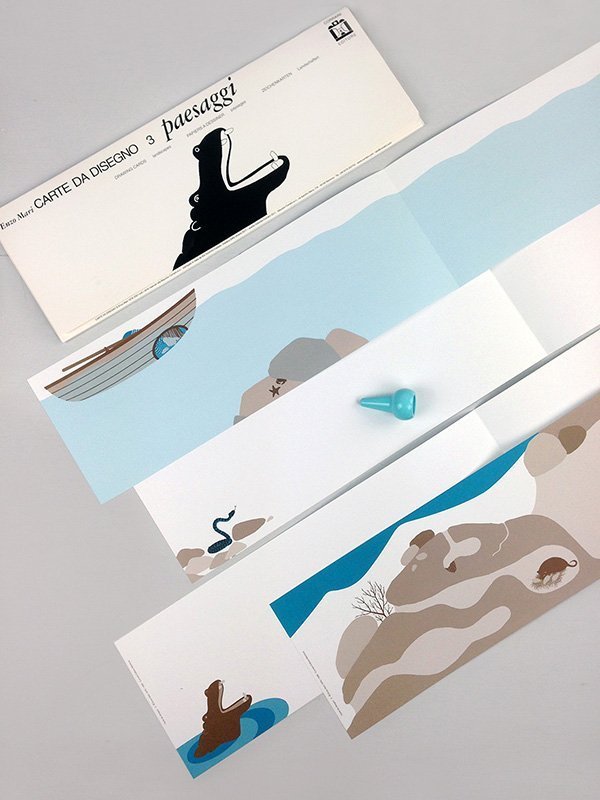Five of the best European artist books publishers
Here is our selection of five among the best publishers of artist books active today in Europe, spanning different countries, book types, and contents.

La Prose du Transsibérien et de la petite Jehanne de France by Blaise Cendrars and Sonia Delaunay-Terk, 1913.
—
Just like any other art form, artist books and their publishers are difficult to define. In her seminal The Century of Artist Books, scholar Johanna Drucker puts forward the idea that the book as an art form involves so many disciplines and activities—fine printing, independent publishing, conceptual art, craft tradition of book art, photography, etc.—that strict criteria for a definition are just impossible to find. Along with giving an overview of some state-of-the-art publishing practices in the field of artist books, the following selection of publishers aims at providing some material with regard of this fleeting definition Drucker refers to.
Edition Patrick Frey

Airports by Peter Fischli and David Weiss, 1990. Edition Patrick Frey.
The Zurich-based Patrick Frey has been active as a publisher for over 30 years, and it counts over 250 books in the catalogue. Famous for the long collaborations with prominent figures in the Zurich art scene such as Walter Pfeiffer and Fischli & Weiss, the publisher is responsible for the seminal books of these artists from the late 80s and early 90s. Crucial in art history, his 1986 reprint of Das Auge, die Gedanken, unentwegt wandernd by Pfeiffer is now considered a breakthrough in queer photography, and Airports by Fischli & Weiss from 1990 is the book that revived Ed Ruscha’s earlier and pioneer approach to artist books. Yet Frey has also had an eye for the territories where pop culture mixes with art, and its first publication was the diaries and documents of guitar player Marlene Marder, leader of Zurich’s first all-female band. Today, Patrick Frey specialises in finely printed and elegantly designed books, with relatively small print runs at a fair price. The publisher has also a focus on emerging artists, providing them with a platform for their first publications, while maintaining the long and fruitful collaboration with its first artists. For example, Frey publication of Pfeiffer’s drawings has recently been awarded as one of most beautiful Swiss books by the Swiss Federal Office of Culture (here our interview with Walter Pfeiffer).
Our pick from the catalogue

Oracles – Artists’ Calling Cards by Pierre Leguillon and Barbara Fédier, 2017. Edition Patrick Frey.
Undeniably, the catalogue of Edition Patrick Frey stands out for its great photography books from both past and recent time. However, our pick is a 2017 book by Pierre Leguillon and Barbara Fédier titled Oracles — Artist’s Calling Cards, which contains only few photographs. This bulky volume contains the reprint of 123 actual business cards, which historical and contemporary artists made as both a way to network and to critique the very act of exchanging cards. Artist’s Calling Cards is special in its being a book of art history, a catalogue of typographic and graphic design experiments, and a reflection on how art history is made.
Roma Publications

Peak Oil by Geert Goiris, 2017. Roma Publications.
Founded in 1998 by graphic designer Roger Willems, artists Mark Manders and Marc Nagtzaam, Amsterdam-based Roma Publications started off as a platform for the books of their founders but pretty soon opened to other invited artists. From exclusive collector books to affordable publications, it is difficult to find what keeps Roma books together. Yet, we could say that Roma catalogue includes some of the best designed books available at the affordable price range, publications that strike a perfect balance between experimental ways of book-making, respect of the content, and attention to printing quality. Naturally focusing on Netherlands-based artists, and often collaborating with Dutch and Belgian institutions, Roma Publications has come to represent a certain way of making artist and art books in the Benelux region, as well as becoming a darling of graphic and book designers from all over, who look at Roma as measure of quality and inspiration. Alike many other publishers, Roma has had long collaborations with a number of artists, including Geert Goiris, Katinka Bock, and Karel Martens.
Our pick from the catalogue

Room of Peace by Bas Princen, 2018. Roma Publications.
Bas Princen’s Room of Peace from 2018 is more than just the catalogue of the installation the famous architecture photographer made at the architecture Biennale in Venice a few years back. This artist book is also a powerful study on the relationship between three and two dimensional works. It consists of a hardcover leporello and an insert with texts and images. The leporello can be folded to become a self-standing paper sculpture. On it, one can find photographs of the installation in Venice, which itself consisted of photographs of a three dimensional artwork, that is, the beautifully frescoed architecture of Sala della Pace in Siena. A vertiginous slope between flat and solid, Bas Princen’s Room of Peace stands out in Roma catalogue as one of its most fascinating artist books.
Three Star Books

RGB by Dominique Gonzalez-Foerster, 2013. Three Star Books.
This Parisian publisher co-founded and directed by Christophe Boutin and Mélanie Scarciglia is nothing less than an artist book powerhouse. Three Star Books, is in fact specialising in publishing books and multiples by some of the best known art stars. With names such as Tauba Auerbach, Dominique Gonzalez-Foerster, Ryan Gander and Slavs & Tatars, as well as some pioneers from the older generation such as Lawrence Weiner and Haim Steinbach, the books in the catalogue of Three Star Books should feature in every collection of these celebrities, as books should not be regarded as less important in these artist’s career than any other medium of choice. Interestingly, Boutin told us that their books also appeal to bibliophiles, that is, those who are interested in books before being interested in whoever made them, a rather surprising fact considering the fame of the artists in their roster.
Our pick from the catalogue

Stab / Ghost by Tauba Auerbach, 2013. Three Star Books.
If the criterion to pick a book from the catalogue should be how experimental it is, the task of choosing from Three Star Books would be a rather difficult one, since the publisher has released great many titles challenging the very definition of book. However, Tauba Auerbach’s Stab/Ghost from 2013 strikes us for the very compelling choice of retaining old book-making techniques such as string binding and silkscreen to produce a very contemporary looking book. The choice of materials is also critical, with transparent plastic used instead of traditional paper, and sleek industrial plexiglass used to show an otherwise crafty object. Besides, this book also prompts a reflection on the distribution and audience of artist books. Coming with a custom designed pedestal and printed in an edition of 10, Stab/Ghost is an exclusive artwork that stands somewhat in between a distributed book and a unique sculpture.
Corraini Edizioni

Carte da disegno: paesaggi by Enzo Mari, 1998/2011. Danese e Corraini Edizioni.
Originally an art gallery in the Italian city of Mantova, Corraini Edizioni begun publishing artist books in the 1980s, and since then one of its main editorial interests has been children books. Over the years, Corraini has collaborated with important Italian artists such as Michelangelo Pistoletto and Alighiero Boetti, though it is the long partnership with Bruno Munari that brought the publisher first to existence and later to fame. Today Corraini also runs a few bookshops in Italy, each with a different focus and including Corraini catalogue, which consists of a large number of titles spanning several topics and designs. Among other reasons, what makes Corraini stand out is the rediscovery and reprint of children books by historically important designers and illustrators such as Enzo Mari, Ivan Chermayeff, and William Wondriska.
Our pick from the catalogue

Prelibri by Bruno Munari, 1980/2018. Danese e Corraini Edizioni.
A children book by an artist doesn’t necessarily mean an artist children book, but in the case of Prelibri by Bruno Munari from 1980, the two meet. Twelve little books sized 10×10 cm of various colours, made of different materials (paper, cardboard, wood, cloth, sponge, transparent plastic, etc), each with a different binding, are boxed into a large three dimensional folder. Containing abstract shapes and drawings, the small books are supposed to be taken out of their case, and handled by children of different age. According to Munari, culture derives from surprise, and surprise is precisely what these books are supposed to bring about. Moreover, Prelibri (which translates in pre-books) is an attempt to stimulate the interest in books themselves from an early age, as the series works as an inventory of the book as both an artistic medium and a functional object for the transmission of knowledge. Corraini has been reprinting and republishing Prelibri for several years now, believing in the pedagogical as well as artistic quality of this compelling artist book.
Pierre von Kleist Editions

Casa de Lava – Caderno by Pedro Costa, 2013. Pierre von Kleist Editions.
The difference between artist books and photo books is hard to pin down. The Portuguese publisher Pierre von Kleist Editions, founded over 10 years ago in Lisbon, has indeed an interest in photo books, yet its editorial approach is very far from making mere catalogues of photographs, instead coming closer to what many would consider an artistic process. One of the founders, André Principe, told us that book-making for him is like cave painting or Chinese language, that is, producing a sequence of visual elements (photographs but also other types of images) that deliver what the author envisions in the form of a book. Just like characters in a language, for him the photographs and other elements should be combined in such a way to produce meaning, yet not mere functional information as it can be in the case of a written sentence, but open artistic content. The space of the book is then like a movie, in which the unfolding of images in series creates a fruitful reaction in the viewer. This cinematographic simile given by Principe doesn’t come as a surprise considering the publisher has also been responsible for the reprint of the scrapbooks of esteemed filmmaker Pedro Costa.
Our pick from the catalogue

Hollingshausen by Anne Lefebvre, 2016. Pierre von Kleist Editions.
A perfect example of Pierre von Kleist Editions’ approach to book-making is their publication Hollingshausen, by artist Anne Lefebvre. Started off with a visit to the artist studio by the publishers, the book became a printed sequence of materials from it, yet not quite its mere documentation. Working with a very free approach to photography but also to drawing and painting, Lefebvre is an intuitive artist that doesn’t prioritise a specific medium over another. This is reflected in the very book itself, which shows her experiments with expired photographic film along with her paintings. For Principe, the sequence in the book should represent a certain state of mind, a feeling of both belonging to a mental and architectural space, while attempting to break with it. Moreover, Hollingshausen is a great example of an artist book in which the contribution of the publisher, as both producer and facilitator of the artist’s vision, has been crucial.
November 7, 2019
